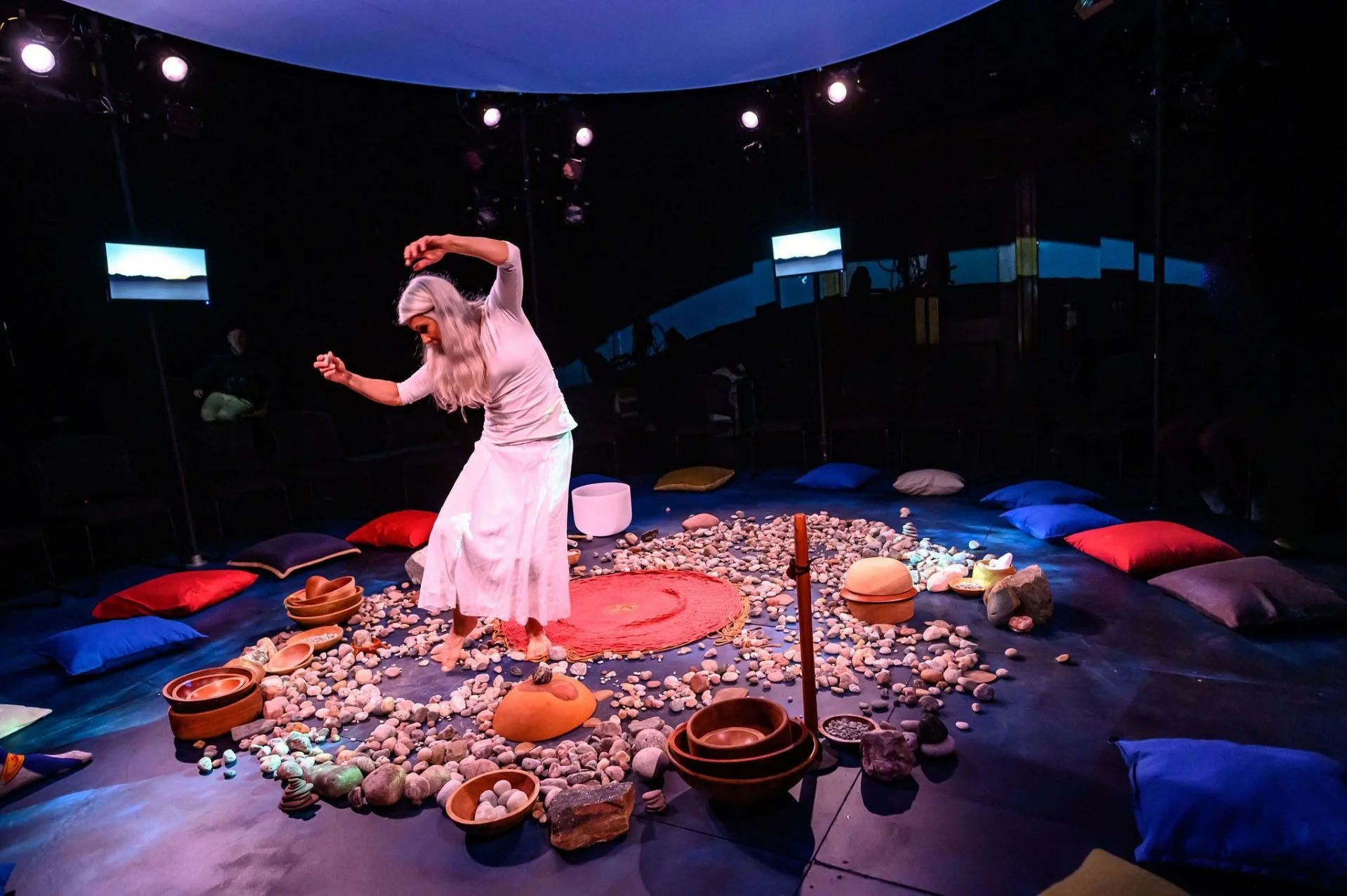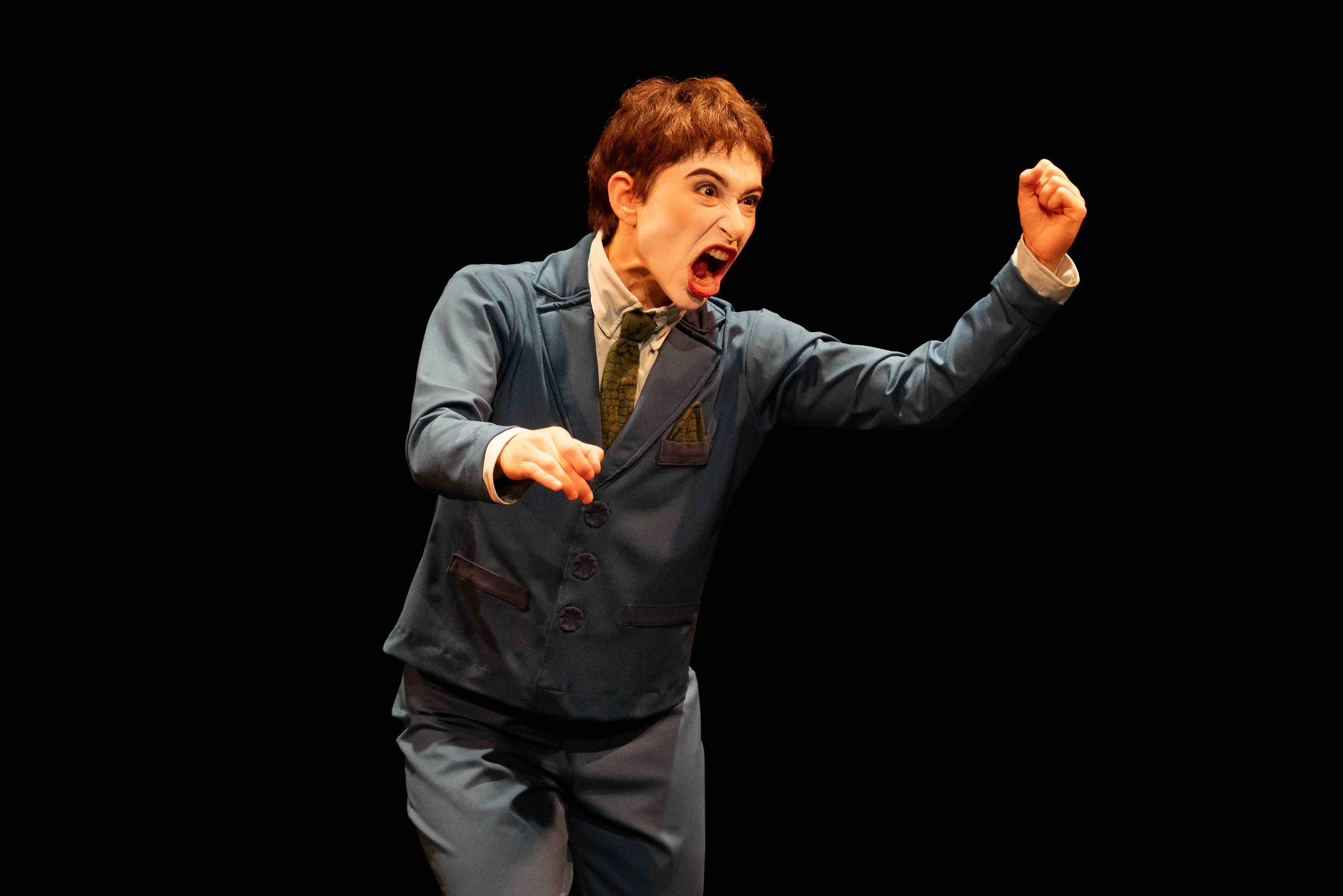Métis artist Jani Lauzon explores the sacred in Prophecy Fog
The intimate play grew out of the esteemed artist's visit to Giant Rock in the Mojave Desert
Prophecy Fog. Photo by Dahlia Katz
Gateway Theatre presents Prophecy Fog, produced by Paper Canoe Projects Productions, from March 9 to 18
Acclaimed multidisciplinary artist Jani Lauzon explores the implications of her childhood in foster care in Prophecy Fog. Throughout her newest play, she shares the way she tied together different threads of her past during a pilgrimage to Giant Rock, a sacred Indigenous site in California’s Mojave Desert that was defamed by tourists in the 20th century.
“Going into foster care is a very specific experience, and there were so many things about my childhood that brushed up against displacement,” Lauzon says in a phone interview with Stir. “There was something about exploring the desecration of something that was once beautifully sacred that I was interested in identifying and connecting to my own personal history.”
Lauzon, who is of Métis, French, and Finnish descent and grew up in Cranbrook, B.C., was first acquainted with Giant Rock during her high-school years, when she became interested in researching the desecration of sacred sites. In 2014, Lauzon revisited her childhood fascination by participating in a residency at the Tracy Wright Global Archive, which honoured the late actor’s practice of developing work and furthering self-exploration by exposure to travel and engagement with communities across the globe. Inspired by Wright’s philosophy, Lauzon embarked on a quest to understand whether sacred sites can retain their sanctity after their destruction.
“Tracy Wright believed that we would be better people if we put our feet down on different lands around the world,” Lauzon says. “It’s a practice which helps us better understand ourselves and others, and so I realized that going to Giant Rock would be a really good thing for me to explore. I took my daughter down there in 2014 and then went back in 2017 with my environmental designer, Melissa Joakim.
“In order for me to understand the question that I was asking about Giant Rock, I needed to actually sit there by its side and really experience the land, as Tracy talked about, and also to really draw my own conclusions,” she continues. “I spent time trying to weave together stories that I hadn't initially thought that were connected, but I found the threads that brought all of these stories together.”
Lauzon’s research led to the creation of Prophecy Fog. The 80-minute production, which is about to have its B.C. premiere, explores family dynamics and concepts of the sacred.
From a young age, the arts were a vessel for Lauzon to bond with her biological and foster families. She considers herself lucky to have grown up in environments where her artistic pursuits were encouraged.
“Both my biological parents were very creative; there was lots of creative energy in the house,” Lauzon says. “When I moved in with my foster parents at 13, my dad was the high-school drama teacher, so there was always theatre, and music played on the record player.
“I really appreciate the thought that my parents were artists in their own right,” Lauzon continues. “With the support of my foster parents, it was acceptable to think that being an artist was an important choice to make.”
Lauzon has had a multidisciplinary career spanning decades, with a background that ranges from stage direction to puppetry. She is a ten-time Dora nominated actor, director, and writer; a three-time Juno-nominated singer-songwriter; an award-winning screen actor; and a Gemini-winning puppeteer. She began her career as a puppeteer working under Jim Henson on projects such as Fraggle Rock and Follow That Bird in the early 1980s. As a stage actor, she has performed in Stratford Festival’s The Breathing Hole, Shaw Festival’s The Orchard, and NAC Aboriginal’s King Lear.
Directed by Franco Boni, Prophecy Fog immerses viewers in images of vast desertscapes and starry skies in a theatre-in-the-round format, persuading the audience to see the landscape from new perspectives.
“The experience is very intimate for sure,” Lauzon says. “I am in conversation with the audience; we are all in very close proximity. The audience sits in a circle and they surround me. It’s a much different experience than going into a proscenium-type environment where there is a separation and an edge of the stage; that edge doesn't exist.
“By the end of the show, the stage ends up being entirely covered in stones,” she continues. “They are my scene partners. They share the stage with me and help me tell the story.”
Through the creation of Prophecy Fog, Lauzon has come to a deeper understanding of her Indigenous identity.
“I'm hoping that the audience has a curiosity about what it means to reconnect in relationship with the land,” Lauzon says. “It’s about being dispossessed and what it actually means to be connected to each other, to nature.”













